NGC Ancients: Mints of the Roman Empire
Posted on 3/10/2020
Coins of the Roman Empire varied considerably in their designs and origins. They were issued at several hundred mints throughout the empire, most of which are classified as ‘provincial,’ meaning they issued coins of local types and denominations intended for local or regional circulation in the provinces.
In addition to these ‘provincial’ mints, the Romans had ‘imperial’ mints that produced coins of imperial denominations and types that usually were intended for empire-wide circulation.
 |
Though this column will focus on the products of Rome’s ‘imperial’ mints, we’ll start with a typical provincial coin (above), a 24mm bronze of the emperor Caracalla (A.D. 198-217) issued by the city of Antiochia in Pisidia.
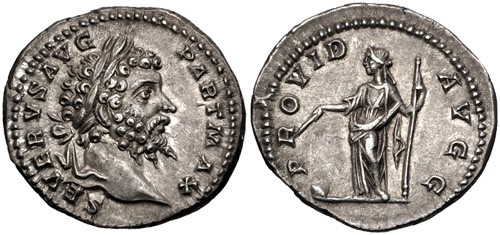 |
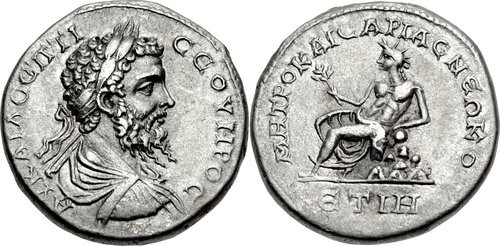 |
Above are two coins of the Roman emperor Septimius Severus (A.D. 193-211). First is a Roman Imperial coin – a silver denarius with Latin inscriptions. The second is a Roman provincial coin – a silver tridrachm of Caesarea in Cappadocia with Greek inscriptions.
As with most every ‘rule’ concerning ancient coins, there are exceptions. For example, some Roman mints issued both imperial and provincial coins, and some provincial coins are believed to have been struck at the Rome mint and then shipped to their destinations in the provinces.
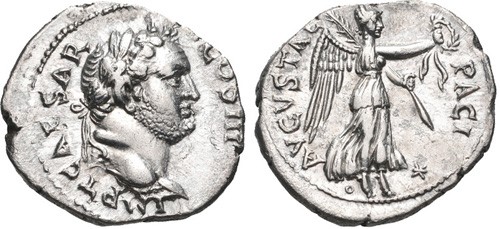 |
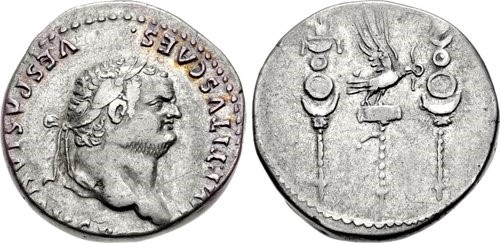 |
Examples of these are shown above from the emperor Titus (A.D. 79-81). First is a silver denarius which, though strictly a Roman Imperial coin, was struck at the provincial mint of Ephesus in Ionia. Second is a silver cistophorus, a provincial coin which was struck either in Ephesus or at the Rome mint and then shipped to Asia for circulation.
In this column we’ll discuss only the most important imperial mints, which produced the most familiar types of Roman coins. Usually these mints were large facilities with fixed locations. Sometimes, however, they accompanied the emperor or his armies, and thus are described as ‘traveling,’ ‘moving’ or ‘mobile’ mints.
 |
Unquestionably the place to start is the mint in the capital city of Rome. Throughout much of Rome’s history, it was the main coining facility of the empire, producing what must have been hundreds of millions of coins over the course of about five centuries. Above is a brass sestertius of the emperor Trajan (A.D. 98-117) struck at the Rome mint.
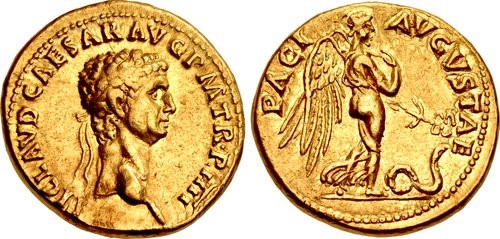 |
For much of the early empire, however, the mint of Lugdunum (Lyon) in modern day France was more important than the mint in Rome. For several decades it produced the empire’s main gold and silver coins, including the gold aureus, above, for the emperor Claudius (A.D. 41-54).
Lugdunum became the chief mint for Imperial gold and silver starting in about 15 B.C., during which time Rome produced only base metal coinage. It remained so until some as-yet-undetermined point between the reigns of the emperors Tiberius (A.D. 14-37) and Otho (A.D. 69), when Rome once again became the center for precious metal coining.
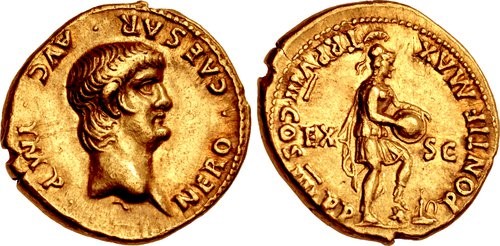 |
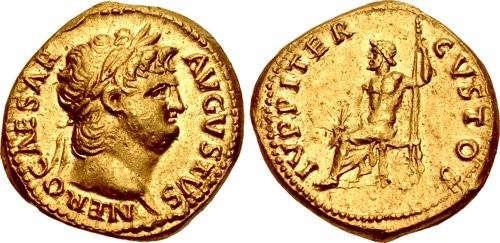 |
Above are two gold aurei of the emperor Nero (A.D. 54-68). The first was struck in A.D. 61-62, either at Rome or Lugdunum; the next is one of A.D. 64-65, which most scholars attribute to the mint of Rome.
We’ll now begin a survey of some of the other important ‘imperial’ mints of the Roman world.
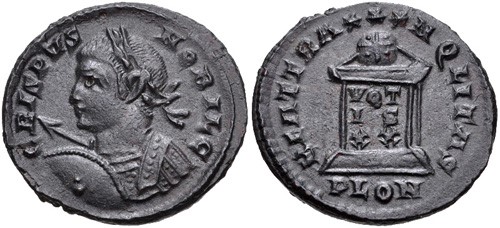 |
Above is a billon AE3 of the Caesar Crispus (A.D. 316-326) struck at London, the westernmost of Rome’s important mints. The mintmark is PLON.
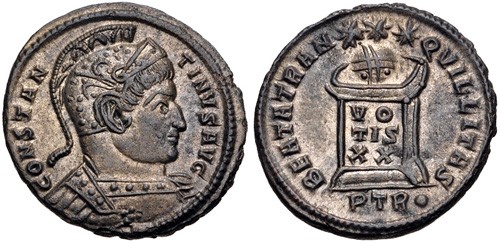 |
The billon AE3 shown above was struck at the mint of Trier (in modern Germany) for the emperor Constantine I ‘the Great’ (A.D. 307-337). Its mintmark is PTR.
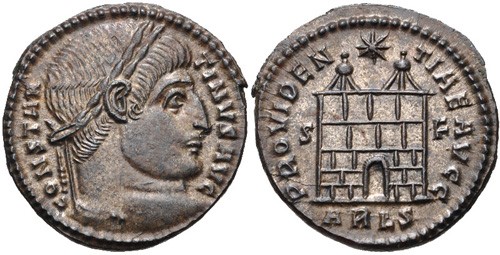 |
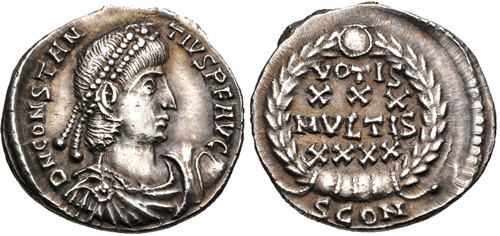 |
Shown above are two coins from the mint of Arles (in modern France). First is a billon AE3 of the emperor Constantine I ‘the Great’ with the mintmark ARLS. Next is a silver siliqua of the emperor Constantius II (A.D. 337-361) with the mintmark SCON, for by this time the city had been renamed Constantina.
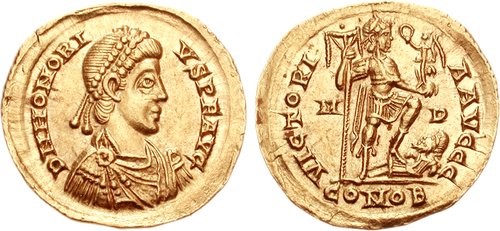 |
Above is a gold solidus of the emperor Honorius (A.D. 393-423) struck at the mint of Milan, in northern Italy. The mintmark, MD, appears in the reverse field.
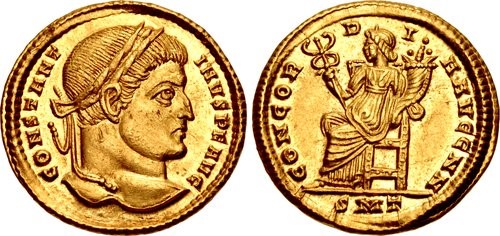 |
The gold solidus above was struck at the mint of Ticinum (in modern Italy) for the emperor Constantine I ‘the Great’. Its mintmark is SMT.
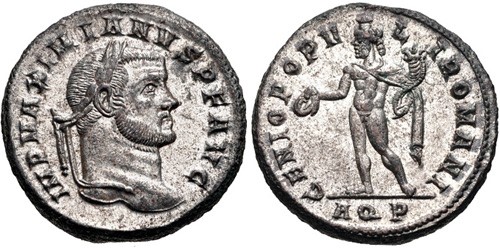 |
The billon nummus illustrated above was struck at the mint of Aquileia (in modern Italy) for the emperor Maximian (A.D. 286-305). Its mintmark is AQP.
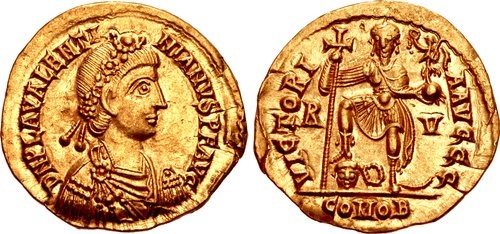 |
Above is a gold solidus of the emperor Valentinian III (A.D. 425-455) produced at the mint of Ravenna, in northern Italy. The mintmark, RV, appears in the reverse field.
 |
The Romans also established a mint at Ostia, the port of Rome on the western shore of the Italian peninsula. Shown above is a billon follis struck there for the rebel-emperor Maxentius (A.D. 307-312). Its mintmark is MOSTT.
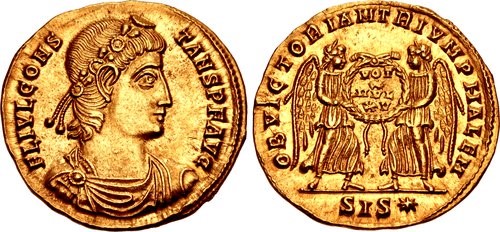 |
There were four important Roman mints in the Balkans and Northern Greece. One was Siscia (in modern Croatia), represented by the gold solidus above. Struck for the emperor Constans (A.D. 337-350), it bears the mintmark SIS*.
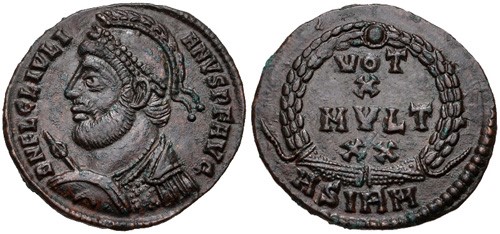 |
The AE3 above was struck at the mint of Sirmium (in modern Serbia) for the emperor Julian II ‘the Apostate’ (A.D. 360-363). Its mintmark is ASIRM.
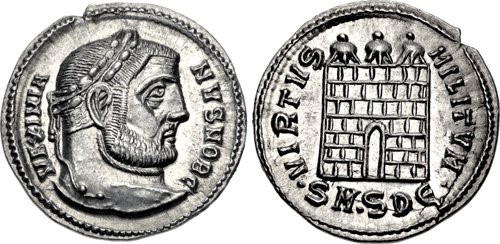 |
The silver argenteus above was struck at the mint of Serdica (in modern Bulgaria) for the Caesar Galerius (A.D. 293-305). Its mintmark is SM.SDE.
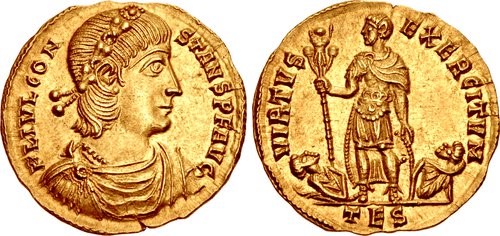 |
Above is a gold solidus of the emperor Constans struck at the mint of Thessalonica (in northern Greece). The mintmark is TES.
Moving from Europe to Asia, we find four Roman mints in the Propontic region clustered around the Sea of Marmara, which linked the Aegean Sea and the Black Sea. They are Heraclea, Constantinople, Cyzicus and Nicomedia.
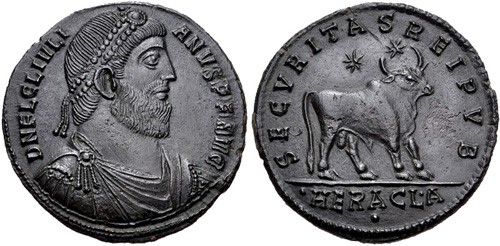 |
Above is a billon AE2 of Heraclea issued for the emperor Julian II ‘the Apostate.’ Its mintmark is HERACL.A.
 |
Of inestimable importance to the Late Roman and Byzantine worlds was the city of Constantinople (modern Istanbul) and its mint. Above is a billon AE3 of that mint issued for the emperor Constantine I ‘the Great’. Its mintmark is CONS.
 |
Above is a billon AE3 of the Caesar Constantine II (A.D. 316-337) struck at Cyzicus. The mintmark is SMK.
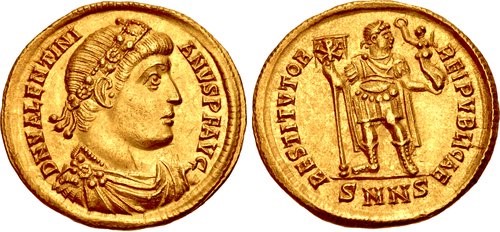 |
Above is a gold solidus of the emperor Valentinian I (A.D. 364-375) struck at Nicomedia with the mintmark SMNS.
Moving south, we encounter Antioch (in Syria) and Alexandria (in Egypt). They were two of the empire’s most productive mints – initially for provincial coins, but later for imperial coins.
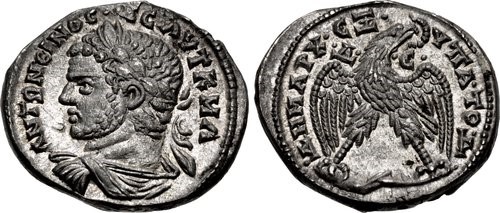 |
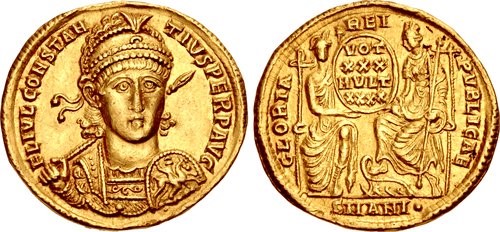 |
Illustrated above are two coins of Antioch. First is a silver tetradrachm of the early 3rd Century A.D. for the emperor Caracalla; next is an imperial gold solidus of the mid-4th Century A.D. for the emperor Constantius II, with the mintmark SMANI.
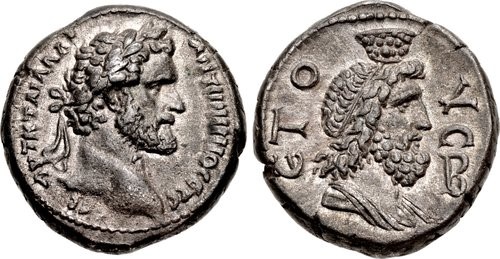 |
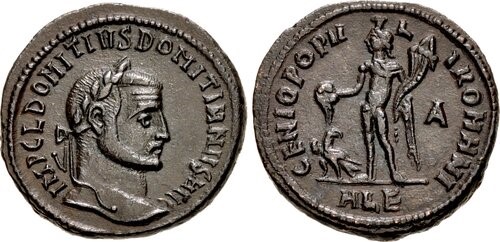 |
Finally, we arrive at Alexandria. Above are two coins from this prolific mint. First is a provincial billon tetradrachm of the emperor Antoninus Pius (A.D. 138-161); next is an imperial billon nummus of the rebel-emperor Domitius Domitianus (A.D. 297-298) bearing the mintmark ALE.
Interested in reading more articles on Ancient coins? Click here
Images courtesy of Classical Numismatic Group.
Stay Informed
Want news like this delivered to your inbox once a month? Subscribe to the free NGC eNewsletter today!